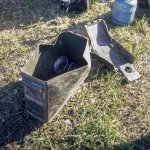marethgriffith
New member
Hello,
I'm an Alaska-bases author, doing some research on a steampunk book I'm writing that involves characters working with carbide lamps.
My question is - if you took a lit carbide lamp and threw it into a puddle had enough to (a) crack the lamp and (b) allow water to soak the carbide reservoir all at once - what would happen? It seems like the lamp has enough outlet valves that it wouldn't actually explode - just have huge flames shooting out of the tip and maybe all around the gasket?
And how long would a fairly full lamp in this configuration burn before all the calcium carbide was exhausted? Ten minutes? More? Less?
Has anyone had this happen, or heard any stories of this happening? Or want to
Thanks in advance for your assistance!
I'm an Alaska-bases author, doing some research on a steampunk book I'm writing that involves characters working with carbide lamps.
My question is - if you took a lit carbide lamp and threw it into a puddle had enough to (a) crack the lamp and (b) allow water to soak the carbide reservoir all at once - what would happen? It seems like the lamp has enough outlet valves that it wouldn't actually explode - just have huge flames shooting out of the tip and maybe all around the gasket?
And how long would a fairly full lamp in this configuration burn before all the calcium carbide was exhausted? Ten minutes? More? Less?
Has anyone had this happen, or heard any stories of this happening? Or want to
Thanks in advance for your assistance!




